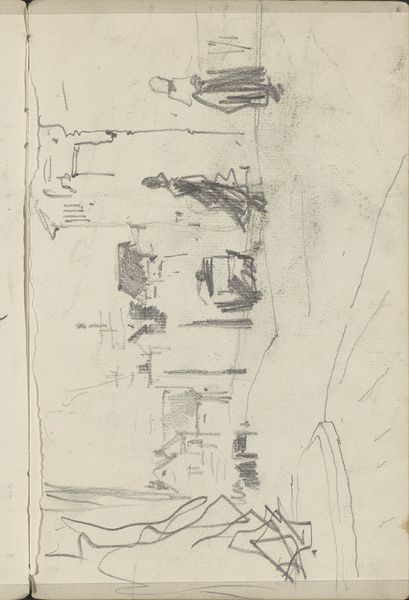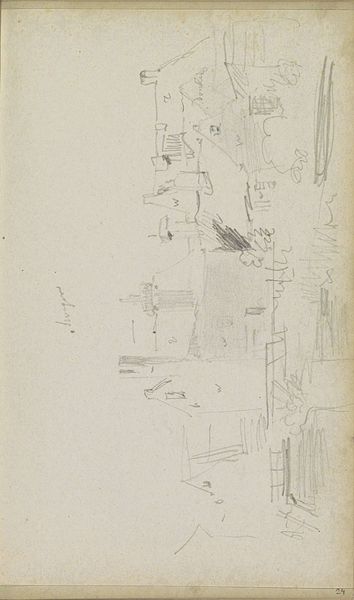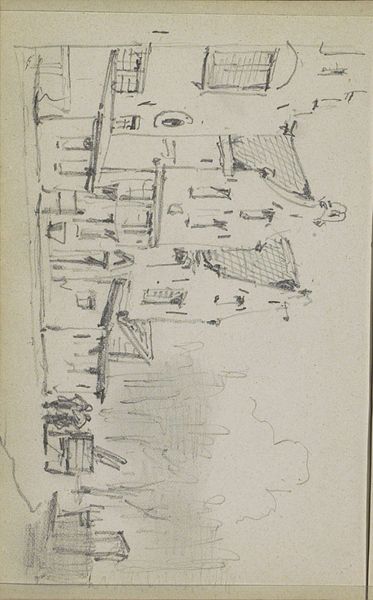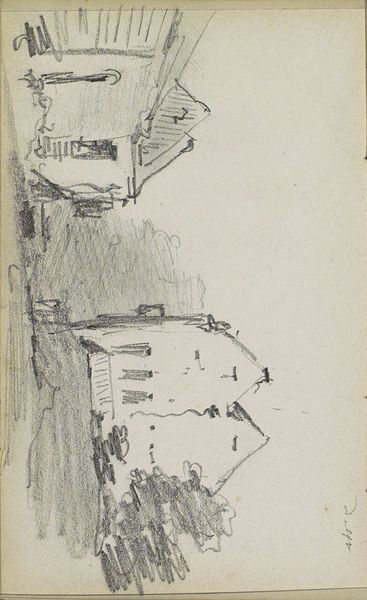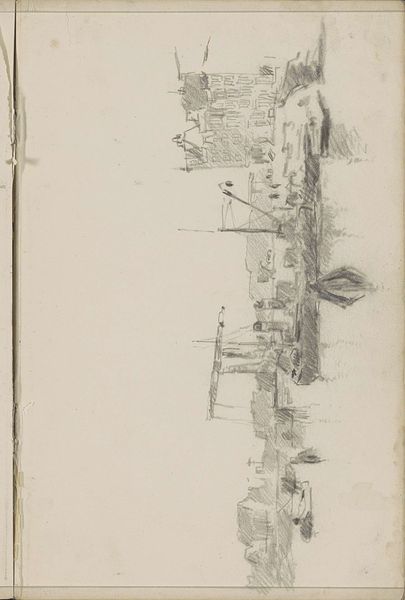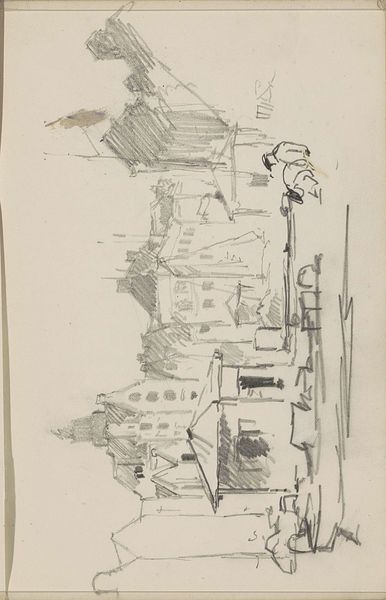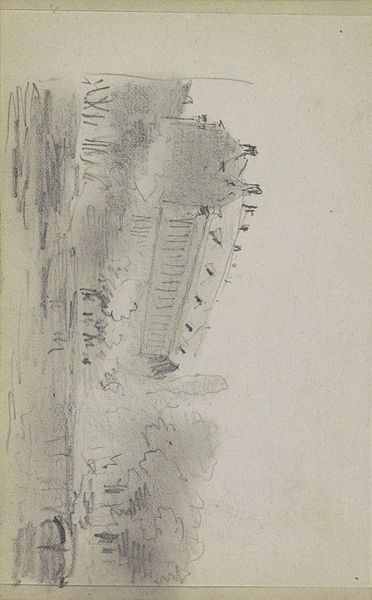
drawing, pencil
#
drawing
#
amateur sketch
#
quirky sketch
#
dutch-golden-age
#
sketch book
#
incomplete sketchy
#
personal sketchbook
#
sketchwork
#
detailed observational sketch
#
sketch
#
pencil
#
sketchbook drawing
#
cityscape
#
sketchbook art
#
realism
#
initial sketch
Copyright: Rijks Museum: Open Domain
Curator: Looking at this pencil drawing, "Stadsgezicht met een gracht," or "Cityscape with a canal," by Adrianus Eversen, dating roughly from 1828 to 1897. It has an intriguing immediacy. Editor: My first thought is "unfinished." There’s a raw, almost frantic energy in the linework that speaks to me of hurried observations, capturing a fleeting moment. Curator: Yes, there’s a sense of directness, evident in the artist’s process. Eversen utilizes hatching and cross-hatching, a typical drawing method in architectural sketches, probably trying to establish tonal values, as we observe in the reflection on the water. This highlights the work and craft of the image, created using pencil—likely on site and very economical from the viewpoint of material investment. Editor: Precisely. And beyond the skillful rendition, think about the implied social commentary here. Eversen lived in a time of massive social and urban change in Europe. Drawings such as this are records of the rapidly evolving urban landscape. Were these canals symbols of progress or of growing inequalities? The location is generic, isn't it, rather than Amsterdam or another specifically identified location. So it could have wider significance for documenting similar changes elsewhere? Curator: The generic quality raises the question: for whom was Eversen crafting these cityscape images? Perhaps there were clients that could influence the social perception and acceptance of the transformation. Editor: Right! Because if we consider how class and social position structure the built environment and subsequent lived experience, who then commissions images of cityscapes and for what purposes? Who profits, literally and metaphorically, from their development? And who loses? Curator: Exactly. In an era dominated by growing industrial activity, maybe he attempts to capture a sense of the atmosphere from what the canal represented for labour class; in essence, to see this art with class and economy in mind rather than the more typical reading of simply another drawing of pretty canals and architecture. Editor: These kinds of initial sketches can offer a glimpse of what was not represented in art back then. In an artwork's very form – raw and rapidly drawn – is its challenge to more classical and celebrated images. Curator: That’s a very helpful and nuanced observation, looking beyond what’s readily visible. Editor: Glad to make a contribution! Curator: As am I. The layers of context here keep expanding!
Comments
No comments
Be the first to comment and join the conversation on the ultimate creative platform.


